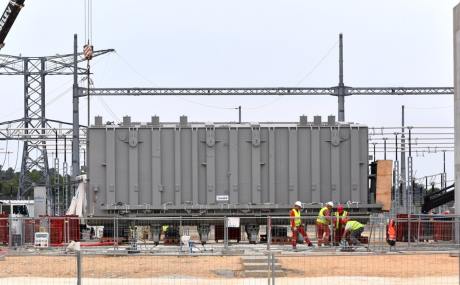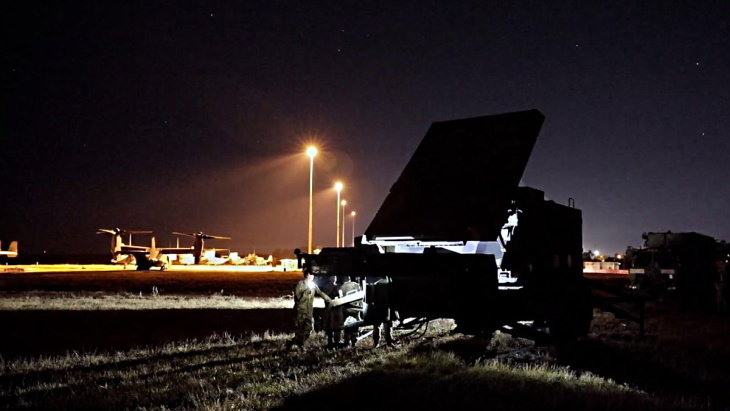As the first of three Chinese-supplied electrical transformers is installed at the Iter fusion project in France, researchers in the Netherlands are testing the resistance to neutron radiation of materials that will shield the fusion reactor's core.
 |
| The first of Iter's three Chinese-supplied transformers (Image: Iter) |
Dutch radioisotope producer NRG announced today that material to be used in Iter's "first wall" will be irradiated in its High Flux Reactor (HFR) at Petten over the coming months. The plasma in which Iter's nuclear fusion reaction will take place at a temperature of 150 million degrees Kelvin is itself contained by a magnetic field. The first wall provides the first shielding of the reactor's core and will be exposed to the high-energy neutrons produced in the fusion process, which are not contained by the magnetic field.
The first wall will be made of beryllium tiles welded onto a subsurface of copper-chrome-zircon alloy, contained in a stainless steel construction. Scale models, using the same tiles, will be placed in the core of the HFR, which is used to produce radioisotopes, to simulate the environment and temperatures that will be found in Iter.
NRG spokesperson Sander de Groot said: "We can mimic the same conditions as in Iter, and the neutron density in the HFR is high. Within a short period we can use this to simulate radiation damage during the life span in the fusion reactor and determine how long components used in Iter can withstand the neutron radiation."
The irradiated mock-ups will then be transported to the Jülich research centre in Germany, where they will be exposed to extremely high heat flux and intense variable thermal radiation to test the resistance of the irradiated material to the extreme heat load it will be subjected to in Iter.
Transformer placement
The 14 metre long, 280 tonne transformer forms part of the electrical network that will provide power to Iter's "pulsed" systems, such as magnet power supplies and plasma heating systems. It was was delivered to the Cadarache site in June. The operation to move the giant component into position from its storage site took nearly two days to complete. First, it was delivered by hydraulic trailer to the installation site, where it was lowered onto railway-type wheels. It was then hauled into its final position along pre-built tracks.
Before it becomes operational, the transformer will be filled with insulating oil and fitted with other equipment including the bushings needed to connect it to the switchyard, bringing its total weight to 460 tonnes.
Two other transformers are due to arrive from China in early 2017 to be connected to the switchyard by the middle of the year.
Thirty-five nations are collaborating to build Iter, the world's largest tokamak, at Cadarache in the south of France. The magnetic fusion device is designed to prove the feasibility of the fusion of hydrogen nuclei as a large-scale and carbon-free source of energy. The EU is funding half of the cost while the remainder comes in equal parts from six other partners: China, Japan, India, Russia, South Korea and the USA. Construction began in 2010 and the facility is scheduled to generate its first plasma in 2025.
Researched and written
by World Nuclear News




_69218.jpg)

_50545.jpg)
_28367.jpg)
_76087_55556.jpg)




